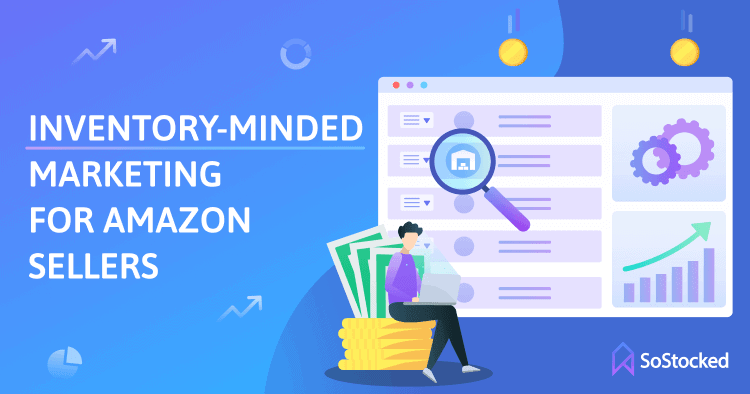
Inventory-Minded Marketing For Amazon Sellers
The days of marketing on a whim are over.
If you truly want to scale an Amazon business, you need to adopt Inventory-Minded Marketing. Inventory-Minded Marketing as a strategy is such an important concept to Amazon sellers but one that is not often talked about. That is why I coined the phrase Inventory-Minded Marketing, so people can start recognizing it as a vital way of thinking about your business.
But it’s not just a cute term. It’s a real inventory management method that saved one SoStocked customer $150,000 annually (more on that later).
This post will discuss what Inventory-Minded Marketing is, why it’s essential, and how to implement it without too much effort. I’m also going to inform you about some critical performance reports and Amazon inventory reports that you can generate to improve your success with Inventory-Minded Marketing.

In this Inventory-Minded Marketing guide, we’ll take a look at:
What Is Inventory-Minded Marketing?
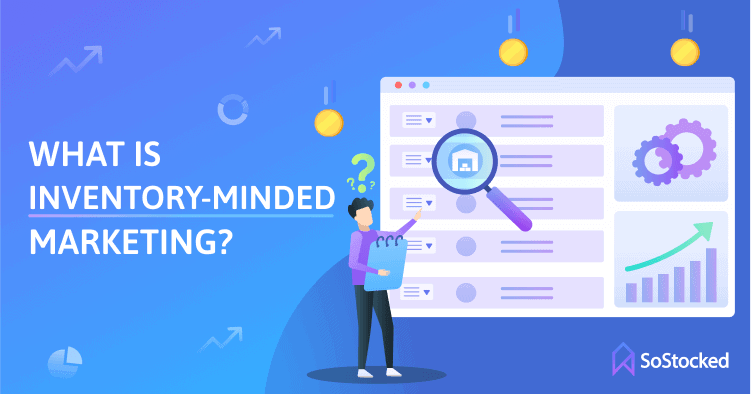
Inventory-Minded Marketing is one of the secrets to scaling. It’s inventory management with marketing in mind, and its marketing with inventory-management in mind. Inventory is linked to cash flow in a big way, and it addresses the costs associated with stocking out.
The other thing that Inventory-Minded Marketing addresses is the cost associated with overstocking. It looks at both sides of the coin. Whether you’re stocking out or overstocking, both are costing you money and have everything to do with cash flow, recovering lost profit, and wasted capital. When capital is just sitting on the shelf, not making you money, it’s being wasted. It’s time to start thinking about inventory as an asset, not just as a product on a shelf.
Inventory is like real estate. It can either be an asset, or a liability. It can make you money, or cost you money. Excess inventory tends to be a dead weight that:
- Drains your resources
- Ties up capital
- Costs you in storage fees
Typically, 20% of your products make 80% of the money. Too often, we tend to only focus on our hero products and push aside the other 80% of the products that aren’t making us money. As you look at your slower-moving products, start considering that 80% as a resource instead of a failed or flailing product. The longer you avoid taking action to move a product, the more it’s going to cost you.
So how do you do get that inventory back into the asset column? You can take that excess inventory, drop the price, push your PPC and start selling it while you drive up the ranking on your listing, earn more reviews, improve cash flow, and recover that capital!
You could potentially change what is a “dud” product into one of your best sellers if you start looking at it differently and figure out how to use that inventory as an asset or as a resource. And if you fail to get it ranked and selling, you gave it a good try, worked it through your system, liquidated it quickly, got your cash back, and moved on.
How Does Inventory-Minded Marketing Work?
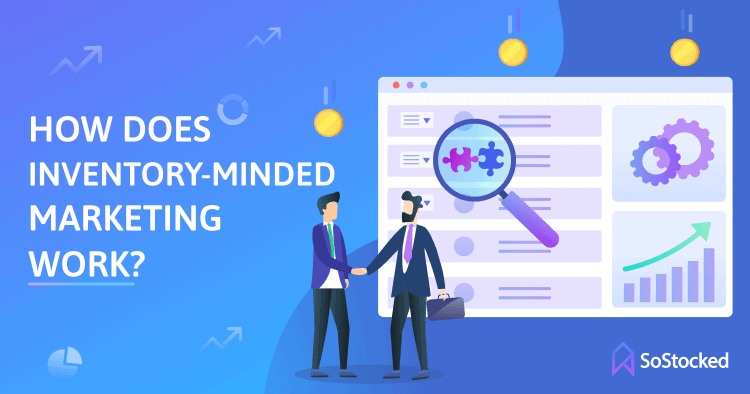
There is another term we like to use in SoStocked which is Sync to Scale. Inventory-Minded Marketing is your Marketing team talking to the Inventory team and Inventory talking to Marketing; both are closely tied to scaling. Many times those two teams are separate, and they’re not talking to each other. This tends to cause problems.
Marketing Needs to Talk to Inventory
There are a couple of ways the separation of Inventory and Marketing creates a problem. When Marketing doesn’t talk to Inventory, stockouts occur that could have been avoided. For example, Marketing might run a PPC ad campaign that goes great but ends up causing a stockout. You can prevent this by vetting your inventory before starting a PPC campaign to determine if it can be sustained for that particular product on an inventory level.
For example, Mother’s Day is coming up. Let’s say that although you didn’t plan for the holiday, you want to do a sale last minute, so you send out a discount coupon code and make a bunch of sales. Then the next month, you’re running out of stock, pumping the brakes, and trying to slow things down. You end up paying for an expensive air shipment to get the product back in stock again. You just ran a discount coupon code that you didn’t need to run. You could have avoided that stock out, gotten full-priced sales rather than discounted sales, not incurred the expensive air freight costs, and made more profit overall.
Listing optimization that doubles your conversion can cause the same issue. It’s a great problem to have, but again, it is a problem. Before you make significant changes to your listing, it’s vital to determine whether those changes could lead to a stockout. Testing these things out before you make those changes by running forecasting scenarios, something in SoStocked that we call Forecast Modeling, and watching how the inventory responds is extremely important.
One benefit to Marketing and Inventory being in good communication is that Inventory won’t have to try to scramble to keep up with Marketing and Marketing won’t hurt cash flow with stockouts, something that could impact Inventory’s ability to reorder and that affects the overall profitability of the company. The Inventory team is often the last to know about marketing campaigns, usually finding out when it becomes an inventory emergency. Suddenly they’re discovering they need to place an order because there’s a stockout coming up due to a successful marketing strategy! A good marketing campaign turns bad fast when it stocks you out. These teams begin more in sync will help the entire business to scale faster and more profitably.
Inventory Needs to Talk to Marketing
Now let’s talk about the flip side, Inventory talking to Marketing. Both sides need to be proactive, and your Inventory team should give certain information to the Marketing team. For example, you may have cash flow issues because you have a ton of money tied up in a product that isn’t moving. Inventory should let the Marketing team know where you have excess inventory and what’s overstocked because they’re often just focused on those hero products and the next new thing.
Storage fees piling up every month can be an inventory and cash flow problem that further hurts your profitability and scalability. Those slow-moving products that you just want to ignore and not deal with are impacting your cash flow and profit. You might be having trouble paying for the products that are moving well because you’re not proactively trying to recover the cash from those slow-moving products. Putting some attention there and getting some of that cash back even if your profit on that product is impacted might make more sense than just leaving it to stagnate.
Even if you lose money by doing this, getting SOME of that money back might be the smarter move because it gives you more money to invest in new products or pay your suppliers for existing products and avoid stocking out where it counts.
Why Inventory-Minded Marketing Matters
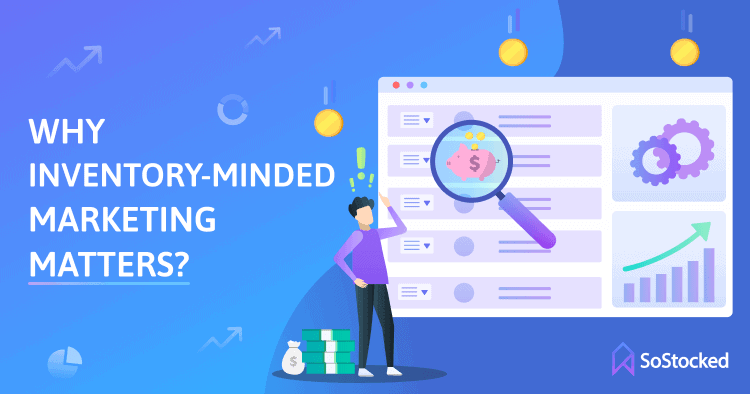
Stockouts and overstock. Both are costing you money.
What is the actual cost of stockouts? There are hidden costs to stockouts that we don’t think about. We tend to mostly think about the lost sales and lost revenue. Stretching out a little further, we are then aware of the cost of air shipments. If you have to air freight inventory to get it back in stock faster, that’s a lot of extra money.
We had a seller who was consistently paying $1.20 per unit for air shipments as her standard way of handling the supply chain because she wasn’t on top of her inventory. Once this seller started using SoStocked, the shipping cost per unit dropped to about $0.45 to $0.55 per unit. That’s $0.65 to $0.75 per unit savings! HUGE savings like that could save a business $150,000. The amount of money you could save just on the air freight alone is crazy!
You also have the cost of re-ranking, and we don’t always know what that cost entails, but these days, it’s usually not cheap.
Another one — and this is the one almost no one is thinking of or talking about — is the amount of money you spent or didn’t make because of discount coupon codes and PPC ad spend that you paid to buy your way into a stockout. If you didn’t give out that coupon code or didn’t run that special ad campaign and simply just sold that inventory more slowly without all the extra cost, you would have made more money and potentially stayed in stock.
And then, if you paid a PPC agency or brand manager a monthly fee to drive you into a stockout, the costs hike even higher.
The hidden cost of stockouts ends up including the amount of money you paid Amazon and your ad agency or the coupon discounts you gave out to get to the point of experiencing a stockout. It would be better to sell your products at full price without additional ad spend so you can stay in stock and keep your rankings up, allowing you to maximize the profit and avoid these added costs that mean less profit and more stress.
Finally, there are the storage fees involved with overstock products. Every month you have those products sitting there, you’re making less and less per unit because of the storage fees. And if you have an inventory loan your paying interest on as well, that monthly cost is even greater.
Inventory-Minded Marketing is vital for all of these reasons. I also want to emphasize the importance of turning capital because the faster you turn your money, the more money you can make. If I can turn my capital more quickly than you, I will grow faster than you. If I can take the same amount of money, turn it and reinvest it once a month, whereas you can only turn it and reinvest it once every six months, I will grow exponentially faster than you. Cash flow is a crucial piece of the puzzle! The faster cash flows, the quicker you grow.
How To Implement Inventory-Minded Marketing
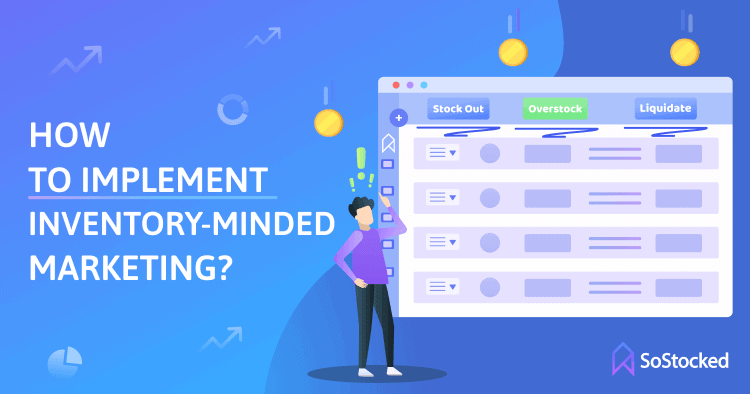
SoStocked has a couple of reports that you can use to implement Inventory-Minded Marketing. Both your Inventory and Marketing teams should be viewing these reports. We’ll start with the reports the Inventory team should be sending to the Marketing team.
Stockout Risks Report
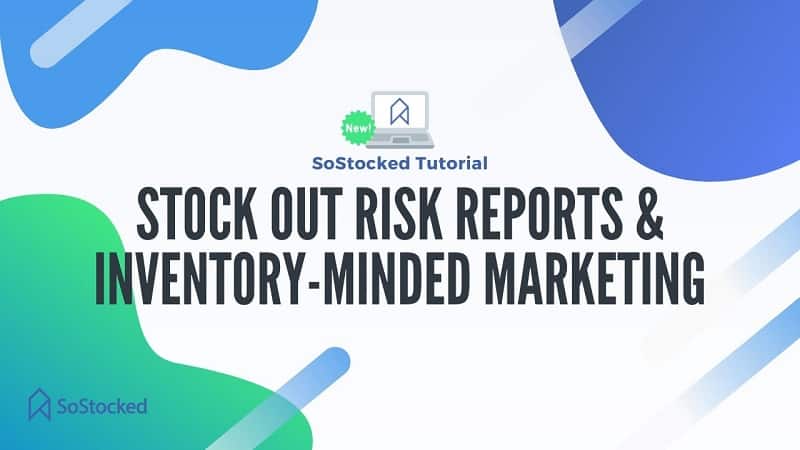
The first report that we’ll talk about is the Stockout Risk Report. The Marketing team should review this report weekly or monthly, as it shows which products are at risk of stocking out. If Marketing knows you’ve got a product that will have a five-day stock out, it’s for them to adjust their strategy to avoid it, but if they don’t know it’s coming, they won’t know to avoid it.
When you can anticipate a stockout, you can do things to slow down sales. Lack of coordination between teams can result in increases in marketing right into stockouts. Something that could be avoided with simple communication, coordination and planning. That’s why it’s essential to pay attention to these numbers and make sure everyone knows what orders are coming in and which items are potentially going to stock out.
Overstock Report
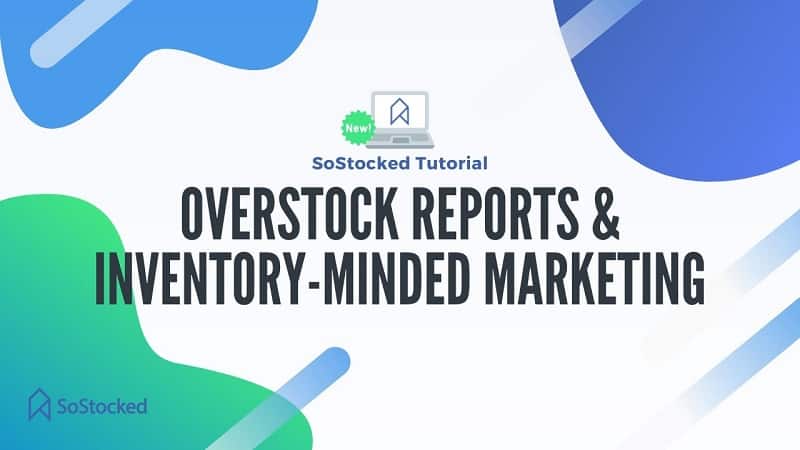
Another helpful report is the Overstock Report. With this information, you can view how many days of inventory are left on Amazon per SKU and whether or not it’s greater than 90 days, or whatever you feel is excessive based on your business model. Generally, more than 90 days’ worth of inventory is a bit excessive and could lead you into unnecessary storage fees. In this case, you should start focusing on turning this inventory into sales instead of paying Amazon storage fees and keeping cash tied up in inventory. Because, with your slow movers, you often have nothing to lose, you can potentially be more aggressive with pushing these products by lowering the price, running more ads, and trying to re-rank these dud products and make them into new hero products.
Liquidation Report
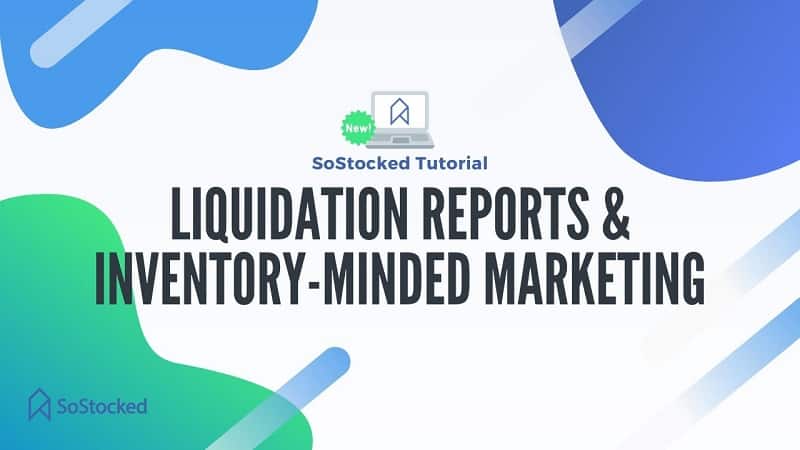
Next is the Liquidation Report. This report identifies products that sell at an extremely low velocity. For example, depending on your business model, if daily sales are less than 5 units a day, it might make sense to just sell through these, get rid of them, and not restock.
Slow Sellers Report

If your velocity is between 6 and 20 units a day, you may classify those Slow Sellers and you’ll want to do something to boost those sales.
This is where our Slow Sellers Report comes in handy.
Use this report to isolate and review your less profitable products. You can then send this list to the Marketing team, and they will determine the best strategy to address this to quickly boost sales and get that cash flowing again to recover more money and keep it working toward expansion.
Forecast Page
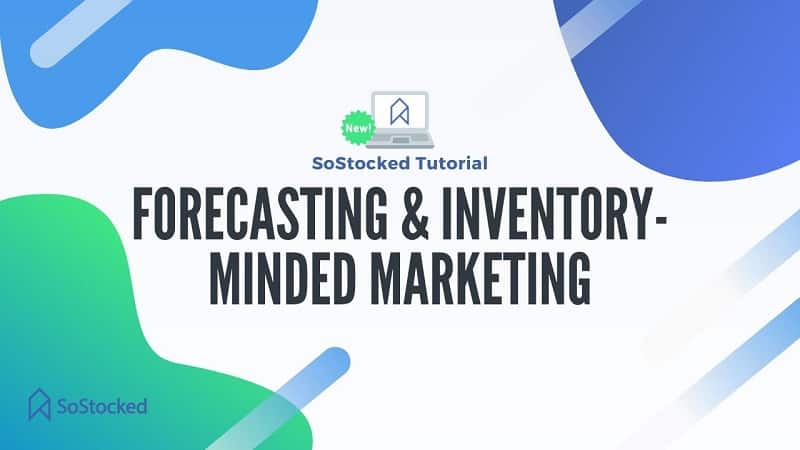
The next thing I wanted to touch on is the Forecast Page. The Marketing team should be giving information to the Inventory team, which can then be implemented into inventory planning via the Forecast page.
For example, Marketing could send information like, “We’re going to be doing a PPC campaign to try to boost sales by 20% on these specific products,” Using Product Tags (for example, creating a tag called “Marketing”), you can then plug those marketing plans into a specific, tagged group of SKUs, and all of the products tagged as “Marketing” will then show a 20% sales boost as part of the inventory plan so that reorders can be properly factored. Now that those products have had this increase applied, you can take a look to see if that increase would create any stockouts, and adjust accordingly to prevent them.
Using this process, you can check all products you’re considering for the campaign, and then Inventory can send a list, letting Marketing know which SKUs can or cannot be marketed at that time based on inventory availability. Inventory can then plan to increase the next order for those products to include them into the campaign later. This works for PPC, Lightning Deals and other sales campaigning.
For example, say you’re going to do an Easter campaign and increase the sales for Easter by 50%. Using your Forecast page, you can determine whether you can afford the sale on an inventory level, meaning you make sure you won’t stock out, or determine how much you need to order to accommodate that sale.
Amazon Inventory-Minded Marketing Planner Template
Aside from our SoStocked reports, you can also apply Inventory-Minded Marketing across your business using this Amazon Inventory-Minded Marketing Planner Template. It contains two documents:
- Amazon Inventory Checklist, which features a list of areas that your inventory, marketing, and accounting teams need to coordinate with each other in order to properly run your business.
- Amazon Marketing Planner is a spreadsheet that lets your marketing staff communicate with your inventory team. The marketing team plugs the sales and marketing data into the planner and then the inventory team moves that data into your inventory planning software to verify whether there’s enough stock to support the marketing plan.
With improved coordination between marketing and inventory, you’re less likely to stockout or overstock, which is key to increasing profitability and the ability to truly scale your business.
Bonus: Check out my Amazon Dashboards blog post for 12+ more ways to organize and streamline your Amazon inventory.
Sync to Scale Your Inventory and Sales
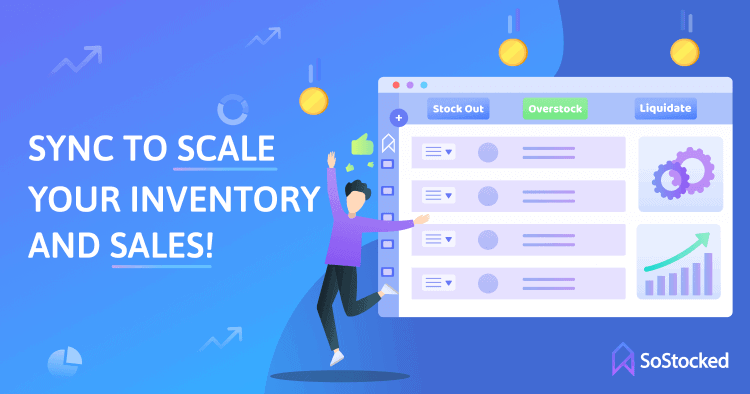
Fundamentally, Inventory-Minded Marketing is getting Marketing and Inventory to communicate. As you can see, the Marketing team must let the Inventory team know the plan before they activate it because it gives them the safety and security to know that they can move ahead without negative consequences. And as Inventory runs the numbers, they can make sure that you stay in stock, point out any potential problems, and proactively support the Marketing team.
This way, everyone is on the same page, and you won’t be running out of cash or inventory. Your business can then grow exponentially! If you truly want to scale, you need to adopt Inventory-Minded Marketing to do that.
We’ve covered just a few of the ways you can begin to implement this communication process within your business. The next step will be getting the Accounting/Cash Flow team included in the communication. It’s all one big cyclical machine.
Action Item: I recommend you implement the following reports into your weekly or monthly planning as you work to create a foundation of communication between Marketing and Inventory:
- Stockout Risk Report
- Overstock Report
- Slow Sellers Report
- Liquidation Report
All of these reports and foundational fundamentals are baked right into the SoStocked Amazon inventory management software so that you can optimize your profit.
In addition to adopting these reports, I also recommend that you join me on an upcoming live webinar to learn about inventory fundamentals, mistakes to avoid, and best practices to adopt. I’m incredibly passionate about making this process easier for you, so let’s do it!
Need more information?
- Send Message: We typically reply within 2 hours during office hours.
- Schedule Demo: Dive deeper into the nuances of our software with Chelsea.
- Join Live Upcoming Webinar: New to Amazon inventory management? Learn three inventory techniques you can implement right away.
 Get Started
Get Started